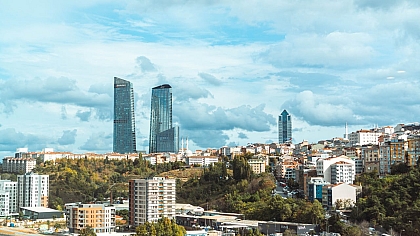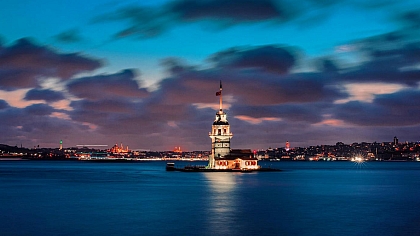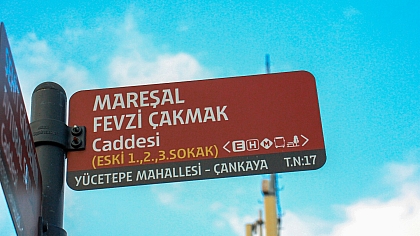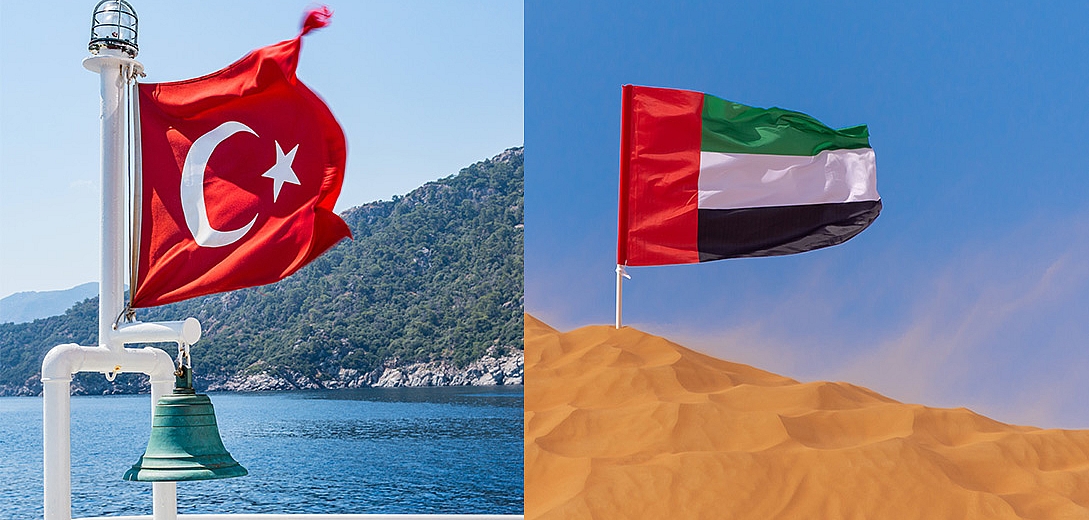
Türkiye vs. Dubai: A Traveller's Dilemma
When it comes to planning an international getaway, there are countless destinations to choose from, each offering its unique charm and appeal. Two popular choices that often find themselves in the spotlight are Türkiye and Dubai.
While both destinations offer rich cultural experiences, breathtaking landscapes, and modern amenities, they are fundamentally different in many ways.
We will compare Türkiye and Dubai as travel destinations, helping you decide which one suits your preferences and interests better.
Cultural Riches
Türkiye, often referred to as the "bridge between East and West," boasts a diverse cultural heritage. With its history dating back to ancient civilizations like the Hittites and Byzantines, and later the Byzantine and Ottoman Empires, Turkey offers a treasure trove of historical sites. The Hagia Sophia, Ephesus, and the Topkapi Palace in Istanbul are just a few examples of the country's rich cultural heritage.
Dubai, on the other hand, is a modern cosmopolitan city known for its architectural marvels like the Burj Khalifa and Palm Jumeirah. While it may not have the deep historical roots of Türkiye, it offers a unique blend of cultures and is home to people from all over the world. The city's museums and cultural events showcase its commitment to preserving its history while embracing the future.
Both Turkish and Dubai's historical and religious architecture exhibit certain similarities, particularly due to shared Islamic influences and, in the case of Dubai, its relatively recent development as a major city. When visiting Dubai, be sure to look into any necessary visa requirements beforehand. You can do this at Dubai Visa UK.
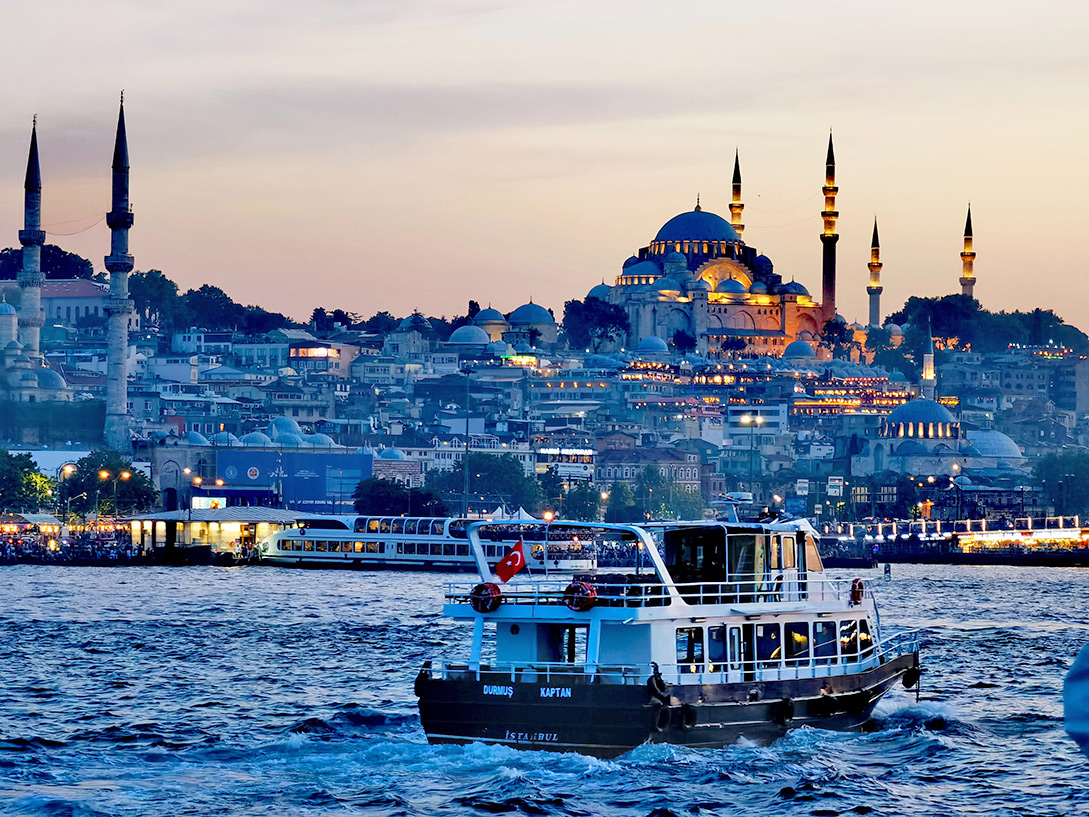
Here are some common elements and similarities between the historical and religious architecture in Türkiye and Dubai:
1. Islamic Architecture: Both regions have a strong Islamic architectural influence, which is evident in the design of mosques, palaces, and other religious structures. Elements like domes, arches, and geometric patterns are prevalent in both Turkish and Dubai architecture.
2. Ottoman Influence: Much of Türkiye's historical architecture is influenced by the Ottoman Empire, known for its grand mosques, palaces, and intricate tile work. Similarly, Dubai's architectural style, while more contemporary, has incorporated elements reminiscent of Ottoman design.
3. Mosque Design: Mosques in both regions feature distinctive minarets, prayer halls, and courtyards. These mosques often showcase ornate calligraphy, intricate tile work, and dome structures. Notable examples include Istanbul's Blue Mosque (Sultan Ahmed Mosque) and Dubai's Jumeirah Mosque.
4. Use of Decorative Tiles: Both Turkish and Dubai architecture incorporate decorative tiles in their designs. Turkish mosques and palaces are renowned for their stunning Iznik tiles, while Dubai's architectural designs may use ceramic tiles with intricate patterns and colours.
5. Courtyards and Gardens: Historical architecture in both Türkiye and Dubai often includes the use of inner courtyards and lush gardens. These spaces provide a sense of serenity and are commonly found in palaces, mosques, and traditional homes.
6. Blend of Modern and Traditional: In Dubai, there is a harmonious blend of modern skyscrapers and traditional architectural elements. The city's older structures often coexist with contemporary buildings, reflecting a balance between the past and the present.

7. Preservation of Heritage: Both Türkiye and Dubai have made efforts to preserve their historical and religious sites. Restoration projects ensure that these architectural gems are maintained and accessible to visitors.
8. Grand Palaces and Residences: Palaces in both regions, such as Topkapi Palace in Istanbul and the Al Fahidi Historic Neighborhood in Dubai, showcase the opulence and architectural prowess of their respective eras.
9. Cultural Centres: Both Türkiye and Dubai have cultural centres and museums dedicated to showcasing their architectural heritage. The Istanbul Archaeological Museums in Turkey and Dubai's Al Fahidi Historic Neighborhood are prime examples.
10. Adaptation to Climate: The architectural styles in both regions often take into account the local climate. Features like shaded courtyards, wind towers (in Dubai's older architecture), and the use of materials suitable for hot and arid climates are common.
While Turkish and Dubai historical and religious architecture share some commonalities, they also have distinct features and historical contexts that make them unique. Exploring these architectural wonders in both Türkiye and Dubai provides valuable insights into the rich cultural and historical heritage of each region.
Natural Beauty
Türkiye is renowned for its stunning natural landscapes, from the fairy chimneys of Cappadocia to the pristine beaches of the Turkish Riviera. The country's diverse geography includes mountain ranges, lush forests, and picturesque coastlines. Pamukkale's terraces, known for their mineral-rich waters, are a natural wonder that draws visitors from across the globe.
Dubai's landscape is a stark contrast, with much of the city built on desert terrain. However, the city has transformed this arid landscape into an oasis, featuring lush green parks and gardens, including the famous Miracle Garden. The surrounding Arabian Desert offers opportunities for thrilling dune-bashing adventures and camel rides.
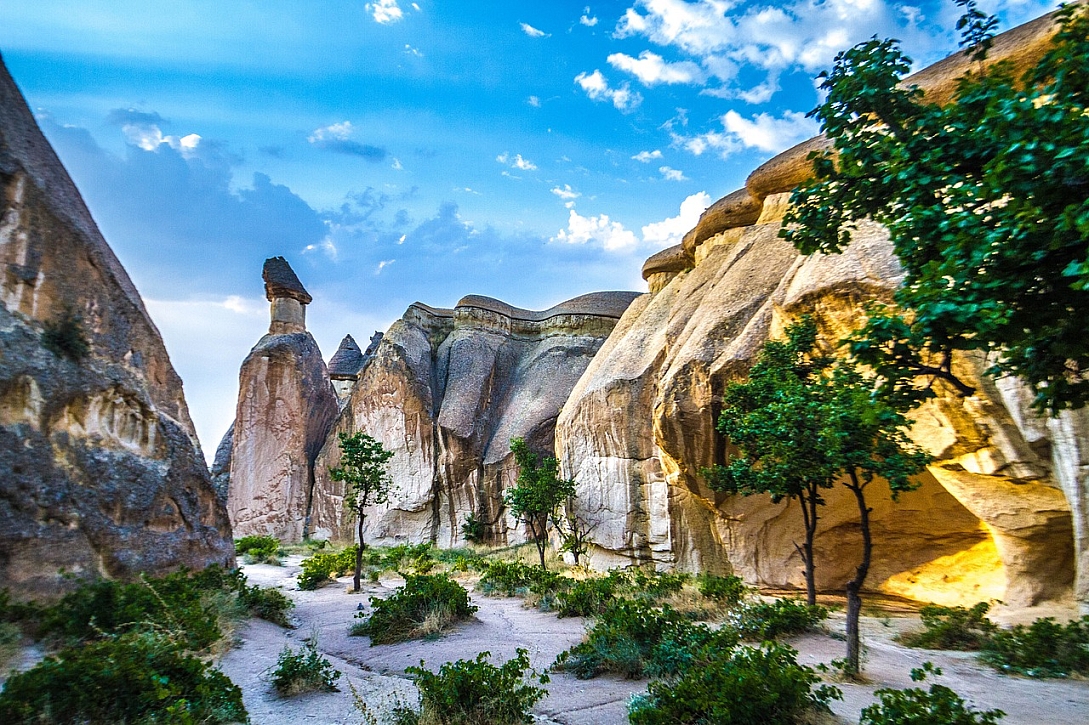
While Türkiye and Dubai have distinct natural landscapes due to their geographical locations and climatic differences, there are a few comparable elements and features between the two regions:
1. Desert Environments: Dubai, located in the United Arab Emirates (UAE), is primarily known for its desert landscape, characterized by vast sand dunes and arid terrain. In contrast, parts of southeastern Türkiye, particularly in regions like Cappadocia and the Taurus Mountains, also have semi-arid and desert-like landscapes with unique rock formations and sandstone structures. While the desert environments in Türkiye are not as extensive as those in Dubai, they share some visual similarities in terms of sandstone formations and dry landscapes.
2. Thermal Springs: Both Türkiye and Dubai have thermal springs and hot water sources. In Türkiye, places like Pamukkale and Hierapolis are famous for their white travertine terraces and thermal pools, creating a visually stunning and unique natural landscape. In Dubai, although the desert climate dominates, there are some natural hot springs in the surrounding areas, offering opportunities for relaxation and rejuvenation.
Dubai does not have natural hot springs within the city itself due to its desert environment. However, there are thermal springs and hot water sources in other parts of the UAE, which are not far from Dubai and can be visited as day trips or short getaways. One such location is the city of Al Ain, which is approximately a 90-minute drive from Dubai.
In Al Ain, you can find the following natural hot springs:
- Al Ain Hot Springs: Al Ain is known for its hot springs, which are said to have therapeutic properties due to their high mineral content. One of the most famous hot spring destinations in Al Ain is Green Mubazzarah, located at the base of Jebel Hafeet mountain. Here, you can enjoy hot water pools surrounded by lush gardens and scenic views.
- Mezyad Hot Springs: Mezyad Hot Springs is another popular natural hot spring area near Al Ain. It's located at the base of Jebel Hafeet and offers hot water pools that are ideal for relaxation.
- Ain Al Fayda Resort: This resort in Al Ain features hot spring facilities along with accommodations, making it a great place for a relaxing weekend getaway.
It's essential to note that while these hot springs offer a unique experience in the desert surroundings of the UAE, they may not be as geothermally active or as extensive as some hot springs found in other parts of the world. Nonetheless, they can provide a soothing and enjoyable experience, especially during the cooler months when the weather in the UAE is more pleasant for outdoor activities.
3. Coastal Areas: Both regions have beautiful coastal areas with access to the sea. While Dubai is known for its stunning beaches along the Persian Gulf, Türkiye offers a diverse coastline along the Mediterranean and Aegean Seas, featuring picturesque beaches, cliffs, and turquoise waters. The coastal landscapes in both places provide opportunities for water-based activities and scenic views.
4. Mountainous Terrain: Although the mountains in Türkiye and Dubai have different characteristics, both regions feature mountainous terrain. In Türkiye, the Taurus Mountains and the Eastern Anatolian Mountains offer rugged landscapes, alpine meadows, and opportunities for hiking and outdoor adventures. In contrast, the Hajar Mountains in the UAE, which extend into the eastern part of the country, offer dramatic rocky landscapes with stunning vistas.
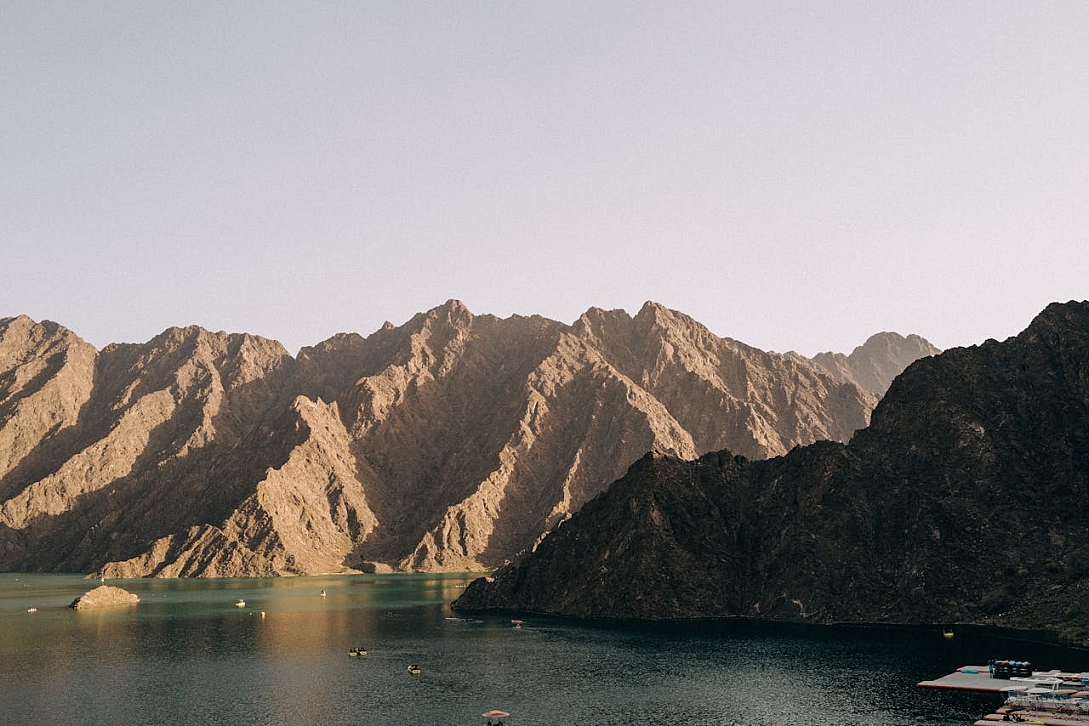
While Türkiye and Dubai have their unique natural landscapes and geographical features, these comparable elements demonstrate that even in diverse regions, you can find some common ground when it comes to natural beauty. Exploring the distinct natural landscapes in both Turkey and Dubai can provide travellers with a well-rounded appreciation of the different facets of nature's wonders.
Modernity and Luxury
Türkiye combines its rich history with modern amenities, offering travellers a well-rounded experience. Istanbul, for instance, is a vibrant metropolis with world-class shopping, dining, and nightlife options. The country's Mediterranean and Aegean coastal regions feature luxurious resorts, catering to those seeking a more upscale experience.
Dubai is synonymous with luxury and opulence. The city is home to some of the world's most extravagant hotels, including the Burj Al Arab and Atlantis, The Palm. Dubai Mall, one of the largest shopping centres globally, offers a shopping experience like no other. Additionally, Dubai's reputation for innovation shines through in its futuristic architecture and entertainment options, such as indoor skiing at Ski Dubai.
Turkish and Dubai malls share several similarities, as both regions have embraced the concept of modern, extravagant shopping centres that cater to residents and tourists alike.
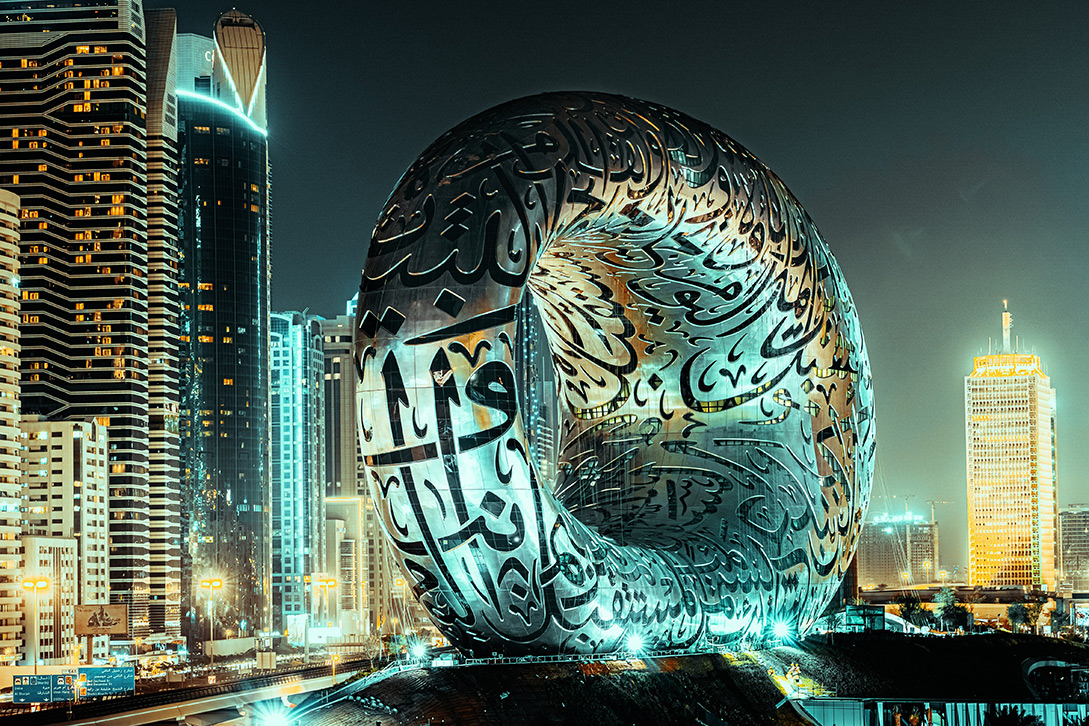
Here are some common features and similarities between malls in Türkiye and Dubai:
1. Size and Scale: Malls in both Türkiye and Dubai are known for their grandeur and large-scale designs. They often feature vast shopping spaces, entertainment areas, and numerous dining options.
2. International Brands: You can find a wide array of international and luxury brands in both Turkish and Dubai malls. Shoppers can explore high-end fashion, electronics, cosmetics, and more in these malls.
3. Entertainment Facilities: Both Turkish and Dubai malls prioritize entertainment. They offer various attractions, such as cinemas, bowling alleys, indoor theme parks, and even ice skating rinks, making them family-friendly destinations.
4. Dining Options: Both regions are known for their diverse culinary offerings within malls. Shoppers can enjoy a wide range of international and local cuisines, from fast food to fine dining.
5. Luxury Shopping: Luxury shopping is a common theme in malls in both Türkiye and Dubai. Visitors can expect to find designer boutiques, upscale jewellery stores, and high-end accessories.
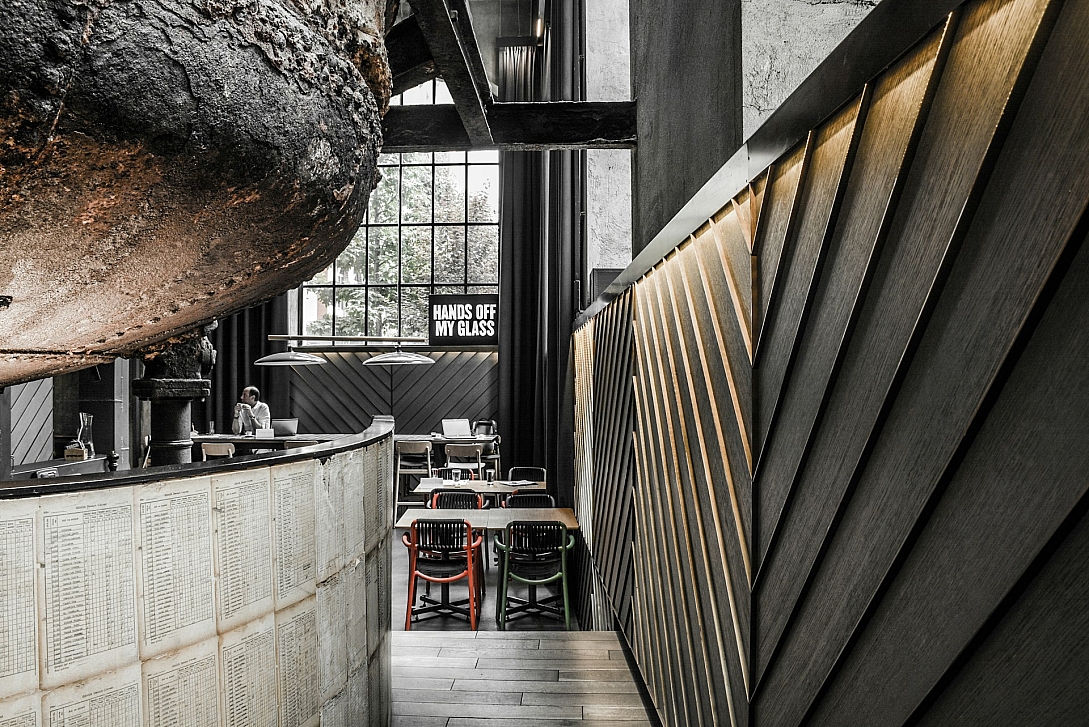
6. Unique Architectural Design: Many malls in Türkiye and Dubai showcase distinctive architectural designs, often featuring impressive glass facades, intricate interiors, and creative use of space and lighting.
7. Cultural Experiences: Some malls in both regions incorporate cultural elements into their design, showcasing local art, craftsmanship, or cultural exhibitions.
8. Events and Entertainment Shows:
- Turkish and Dubai malls frequently host events, exhibitions, and entertainment shows, ranging from fashion shows to art exhibitions, which add to the overall shopping experience.
9. Accessibility: Both Turkish and Dubai malls are generally easily accessible, often located in strategic areas within their respective cities. They provide ample parking and public transportation options.
10. Extended Operating Hours: Malls in both regions typically have extended operating hours, making them accessible to shoppers throughout the day and into the evening.
11. Sale Seasons: Similar to many other shopping destinations around the world, both Turkish and Dubai malls hold seasonal sales, offering shoppers the opportunity to find discounted items.
12. Multicultural Atmosphere: Due to their popularity among tourists and expatriates, both Turkish and Dubai malls often have a diverse and multicultural atmosphere, which adds to the global shopping experience.
While Turkish and Dubai malls share these common features, they also reflect the unique culture and local preferences of their respective regions. Exploring malls in both Türkiye and Dubai can provide a glimpse into the modern shopping scene and lifestyle of these dynamic destinations.
Culinary Delights
Turkish cuisine is a gastronomic journey in itself. From the delectable kebabs to mouthwatering baklava and Turkish delight, there's a wide variety of dishes to savour. Turkish breakfast, featuring olives, cheeses, and fresh bread, is a culinary experience not to be missed.
Dubai's dining scene is a melting pot of international flavours. With its multicultural population, the city offers an array of culinary options, from traditional Emirati cuisine to gourmet international fare. Dining in Dubai is often a lavish experience, with restaurants offering stunning views and extravagant presentations.
While Turkish and Dubai cuisines have distinct flavours and characteristics, they also share some similarities due to their Middle Eastern influences and the global nature of their respective food scenes.
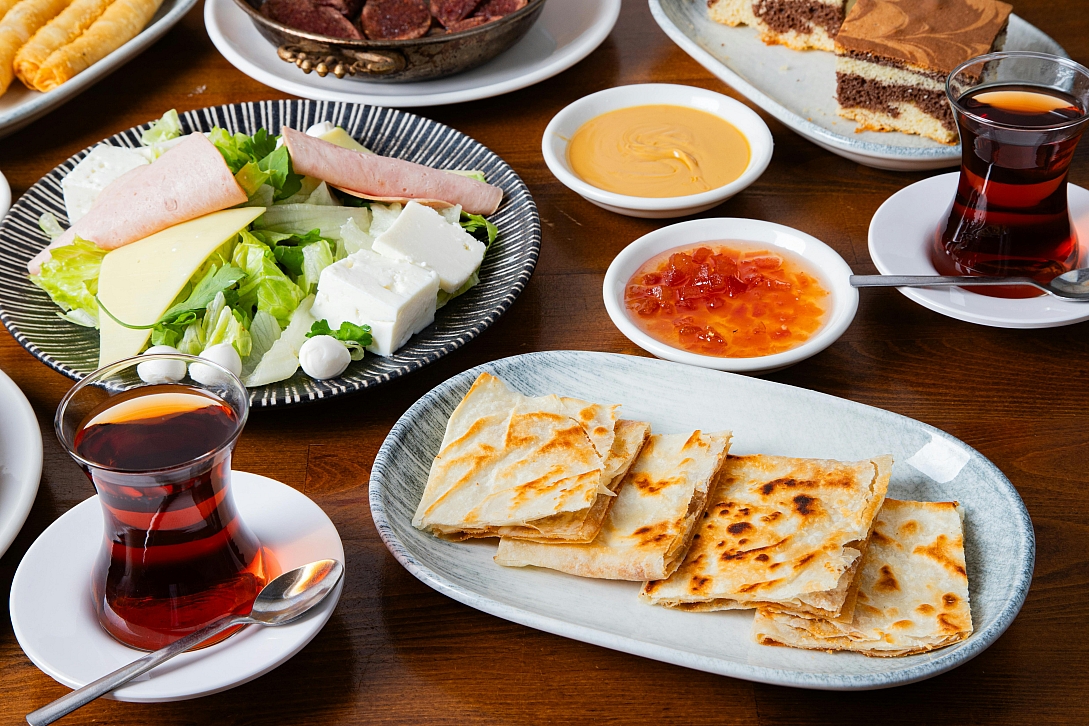
Here are some common elements and dishes found in both Turkish and Dubai cuisines:
1. Grilled Meats: Both cuisines are known for their love of grilled meats. Kebabs, in various forms, are popular in both Turkish and Dubai cuisine. You can find lamb, beef, chicken, and even fish kebabs seasoned with a blend of spices and herbs.
2. Flatbreads: Bread is a staple in both Turkish and Dubai meals. In Turkey, you have pide and lavash, while Dubai offers khubz, a traditional Arabic flatbread. These breads are often used to scoop up dips, wrap around meats, or create sandwiches.
3. Rice and Pilaf: Rice dishes are commonly enjoyed in both cuisines. Turkish pilaf and Dubai's various rice preparations often feature fragrant spices and sometimes include nuts and dried fruits.
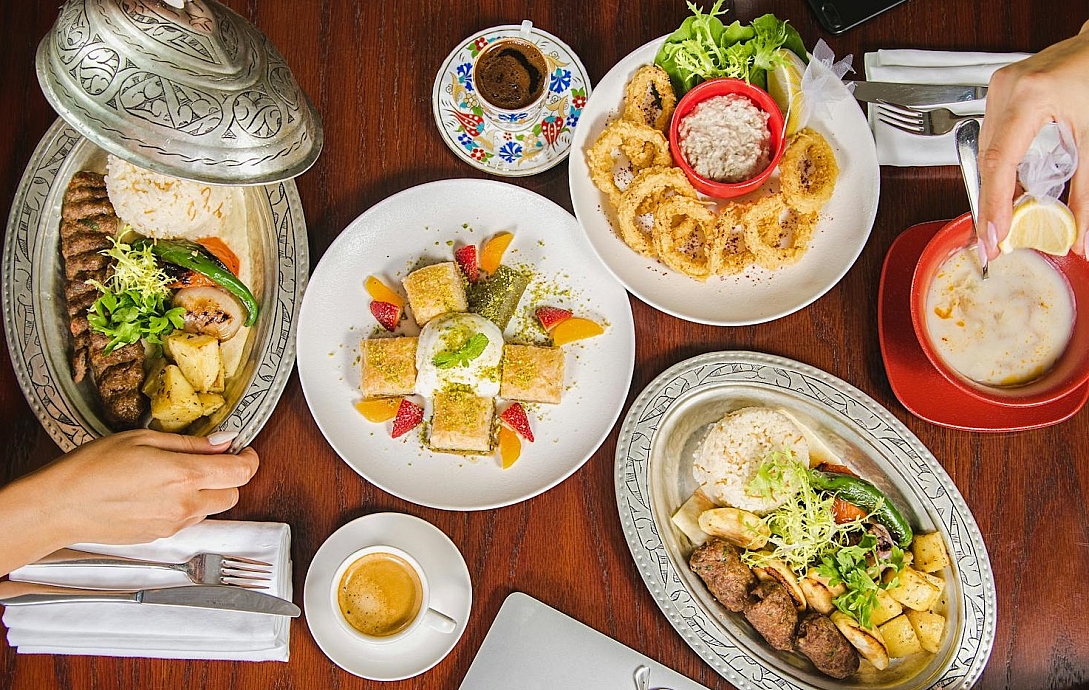
4. Fresh Vegetables and Salads: Both cuisines emphasize the use of fresh vegetables and salads. Turkish cuisine offers classics like shepherd's salad, a mix of tomatoes, cucumbers, and peppers, while Dubai cuisine features salads like tabbouleh and fattoush.
5. Yoghurt-Based Dishes: Yoghurt is a significant component in both Turkish and Dubai cuisines. Turkish cuisine has dishes like cacık (tzatziki) and ayran, a yogurt-based drink. Dubai cuisine includes labneh and yoghurt-based sauces commonly served with grilled meats and bread.
6. Sweets and Desserts: Both Turkish and Dubai cuisines have a sweet tooth. Baklava, a popular Turkish dessert, is also found in Dubai, along with other Middle Eastern sweets like kunafa and ma'amoul.
7. Spices and Herbs: Both cuisines make use of a wide range of spices and herbs to flavour their dishes. Common spices include cumin, coriander, sumac, and paprika, which add depth and complexity to the flavours.
8. Coffee and Tea Culture: Both Turkish and Dubai cultures have strong coffee and tea traditions. Turkish coffee is renowned for its strong, finely ground coffee beans, while Arabic coffee (gahwa) is a staple in Dubai, typically served with dates.
9. Middle Eastern Influences: Both cuisines are influenced by Middle Eastern culinary traditions, which means you'll find dishes like hummus, falafel, and shawarma in both Turkish and Dubai food scenes.
While Turkish and Dubai cuisines share these similarities, it's essential to remember that each has its unique dishes, flavours, and cooking techniques that make them distinct and enjoyable for food enthusiasts. Exploring the local specialities and regional variations in both cuisines can provide a rich culinary experience when visiting Turkey and Dubai.
The choice between Türkiye and Dubai ultimately depends on your travel preferences. Türkiye offers a rich cultural and historical experience, diverse natural beauty, and a blend of tradition and modernity. Dubai, on the other hand, entices travellers with its luxury, futuristic architecture, and international allure.
Whether you're drawn to the ancient streets of Istanbul or the futuristic skyline of Dubai, both destinations promise unforgettable memories and experiences. So, whether you're a history buff seeking cultural immersion or a luxury traveller looking for opulence, both Türkiye and Dubai have something unique to offer. The decision is yours, and no matter which you choose, an exciting adventure awaits.


